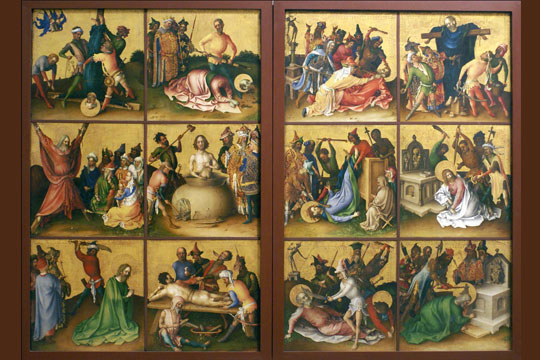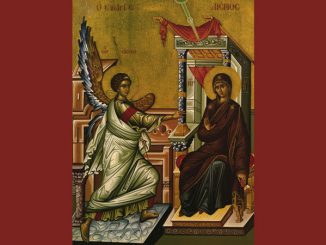
During the Easter season, I like to spend some time talking with the young people about what happened to the disciples after the Resurrection. We cover the post-Resurrection appearances of Christ, but I also use the time to introduce the stories of the Apostles and where they went after the Ascension and Pentecost.
Christ Our Life, Grade 7, Chapter 7 provides a section called “Portraits of the Apostles,” which details this activity, but the information about the lives of the Apostles can also be found through Web searches. We have one or two paragraphs of information on each of the Apostles (including Judas and his replacement, Matthias). I divide the young people into small groups if needed, or assign one Apostle to each participant. I give the class time to read the brief bios and instruct the young people to share the key points with the rest of the group—including feast day, where each traveled after Pentecost, and method of death.
We then do an activity in which I ask review questions about the lives of the Apostles and the students have to raise a card with the name of the Apostle(s) that answer the question. Over the years I’ve seldom had more than 13 kids in the room for the activity, so I give each young person a card with the name of one Apostle. If I have a few more or a few less students, we can double-up on names as needed. Questions include: Which Apostles were fisherman? Who become the first head of the Church? Who was chosen to replace Judas? Which Apostles were Gospel writers? and Which Apostles were martyred?
By doing this exercise, the young people learn about the Apostles and how each took Christ’s mission to the world. They particularly notice that most of the Apostles were killed for their faith. The lesson shows that following Christ is not an easy path, but faith, commitment, and prayer will bring the strength a disciple needs—whether in the time of the Apostles or in the 21st century—to live the life God calls us to live.
Have you shared the stories of the early disciples with your group? How were the stories received?
Image: Stefan Lochner, “Die Apostelmartyrien.” “The Martyrdom of the Apostles,” 1435–40, public domain via Wikimedia Commons.





We owe so much to the Apostles. It often occurs to me that it is their witness that is the most convincing evidence of the Resurrection. Think about it: if you wanted to save face after a calamitous defeat in which your hero/leader was crushed and destroyed, you would most likely consider concocting a story in which he returns from the dead to get revenge on those who orchestrated and carried out his downfall. You would then proceed to murder his enemies and claim he had done it to show that your movement was victorious. If you yourself were to face martyrdom in his name, you would be sure to take down as many of his enemies with you. The last thing you would do would be to concoct a story in which you yourself abandoned, denied, and betrayed your leader at his hour of death followed by his rising from the dead, not for revenge, but to spread forgiveness, commanding you to do the same, thus leaving you completely vulnerable to the same fate he faced. The fact that these followers of Jesus not only were in complete agreement on this story but found it compelling enough to endure hardship, suffering, and true martyrdom (not suicide killings) is evidence enough that they had experienced a complete transformation and that they attributed this transformation to the Risen Christ!
What a great way to mark the Easter season, Denise, by focusing on the Apostles and their experience of the Risen Christ!
Yes, Joe, you’re right that the witness of the Apostles testifies to the transformation they received through Christ. Thanks for your comment.
To review the Church’s history shortly after the ascension of Jesus, I had as an opening activity what I called “saint bingo.” Each 8th grader received the brief and kid-friendly bio of a different saint, and a grid with questions which focused on how the apostles sacrificed, suffered, or died. The instructions asked for the answer in 4 words or less. Most questions on the 12 box grid were, “How did St…. die?” Some were “Which saint was chosen to replace Judas Iscariot?” and “Who hung on his cross for two days, preaching before he died?”
In the class completion of the grid, kids found out about the saints of the others. I kept track on my master grid by pre-assigning the kids so if all were quiet at a question, I’d know whose name to call for the answer. I implemented this for two 8th grade classes, and as the answers revealed brutal ends, both classes got the point Joe makes above about true martyrdom, with students remarking with shock.
I was inspired to do introduce Church history with this activity because of an interaction my husband had with a priest at a beer tasting event held at a retreat house (brilliant, right?). My husband had always said he was like Thomas pre-verification. The priest asked my husband to think about the terrible and documented deaths of the apostles as evidence of the truth of Jesus.
This posting, and Joe’s remarks, helped me figure out how to use that inspiration.
Alicia, your saint bingo sounds like a great activity to engage the young people in learning about the saints!